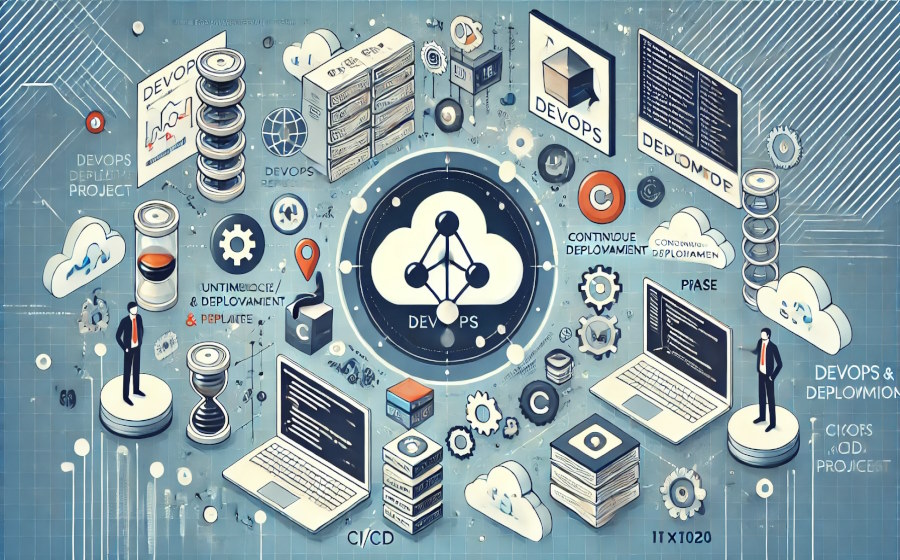
The Essential Team for a Successful Redesign Project: DevOps and Deployment Phase
In this article, part of our series on essential team members for a successful website redesign project, we focus on the DevOps and Deployment Phase. This phase is crucial for ensuring that your newly designed website is reliably and efficiently moved from development to production. The skill levels required for this phase can vary significantly based on the deployment environment chosen. Here, we'll explore the differences between using Umbraco Cloud, Vercel, and custom deployment environments, and highlight the key roles and skills needed for each scenario.
Deployment Models: Simplified vs. Custom Environments
When deploying a website, the choice of environment greatly influences the complexity of the deployment process and the skills required from your team. Using managed platforms like Umbraco Cloud and Vercel can significantly simplify the process, while custom environments, including those using Kubernetes, demand more advanced skills and dedicated resources.
Key Roles in the DevOps and Deployment Phase
1. DevOps Engineers
Purpose: To manage the deployment process, ensuring that the website is properly configured, tested, and launched in the chosen environment.
Responsibilities:
- Environment Setup: Configure the deployment environment, whether it's a managed service like Umbraco Cloud or a custom setup.
- Continuous Integration/Continuous Deployment (CI/CD): Implement and manage CI/CD pipelines to automate the deployment process.
- Monitoring and Maintenance: Set up monitoring tools and processes to ensure the website runs smoothly post-deployment.
Skills Needed:
- Git and Repository Management: Proficiency in using Git for version control and managing the codebase.
- CI/CD Tools: Experience with tools like Jenkins, GitHub Actions, GitLab CI, or Azure DevOps.
- Deployment Platforms: Knowledge of platforms like Umbraco Cloud, Vercel, or Kubernetes for custom environments.
2. Front-End and Back-End Developers
Purpose: To assist in the deployment process, particularly in configuring the application for the deployment environment.
Responsibilities:
- Code Readiness: Ensure that the codebase is ready for deployment, with all necessary configurations and optimizations.
- Environment-Specific Adjustments: Make adjustments to the code and configuration files to suit the deployment environment.
- Collaborative Support: Work with DevOps engineers to resolve any issues that arise during deployment.
Skills Needed:
- Environment-Specific Knowledge: Understanding of the specific requirements and best practices for the chosen deployment platform.
- Troubleshooting: Ability to quickly identify and resolve deployment issues.
Deployment on Umbraco Cloud and Vercel
Choosing managed platforms like Umbraco Cloud for your CMS and Vercel for your headless client simplifies the DevOps requirements significantly. Here’s why:
Umbraco Cloud
- Simplified Process: Umbraco Cloud provides a predefined deployment process, including Git repository and project structure.
- Automatic Updates: The platform handles updates and maintenance, reducing the workload on your team.
- Integrated Tools: Built-in tools for content management, deployments, and environment management streamline the process.
Vercel
- Optimized for Next.js: Vercel is designed to seamlessly deploy Next.js applications, with built-in support for features like server-side rendering and static site generation.
- Ease of Use: Vercel offers a user-friendly interface and automated deployments, making it easy to manage your applications.
- Performance and Scalability: Vercel handles performance optimization and scaling, ensuring your application runs efficiently.
Custom Deployment Environments
For companies with more stringent requirements or specific needs, deploying in a custom environment can offer greater control but requires a more sophisticated team. This includes:
- Kubernetes: For container orchestration, offering high scalability and flexibility.
- Custom CI/CD Pipelines: Tailored to your specific requirements, providing full control over the deployment process.
- Advanced Security Measures: Implementing custom security configurations and compliance measures.
Recommendations
Given the complexity and resource demands of custom environments, we highly recommend using Umbraco Cloud for CMS deployments and Vercel for headless client deployments. These platforms simplify the deployment process, allowing your team to focus more on development and less on infrastructure management.
Conclusion
The DevOps and Deployment Phase is critical for ensuring that your redesigned website is launched smoothly and runs efficiently. By choosing the right deployment model and ensuring your team has the necessary skills, you can significantly streamline this phase. Managed platforms like Umbraco Cloud and Vercel are excellent choices for most projects, offering simplicity and reliability.
In our next article, we will explore the final phase: Post-Launch and Maintenance, discussing the roles and skills needed to keep your website running smoothly after it goes live. Stay tuned as we continue to outline the roles and skills needed at each stage of a successful website redesign project.



